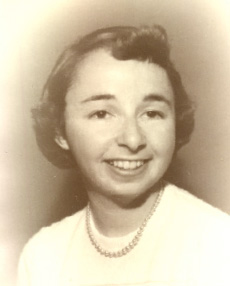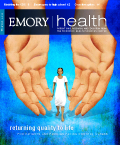When bone marrow goes bad
|
The author's mother, Bev Tricoles |
To this day, the words multiple myeloma make my heart skip.
They take me back to memories of my mother’s premature death from this disease, a tenacious cancer of the plasma cells. Little was known about multiple myeloma in the early 1970s when my mother was diagnosed at age 42. Although she had little hope of living long with the disease, thankfully, times have changed, and things have improved for those who have multiple myeloma today.
One of the most famous people to benefit from knowledge about the disease garnered over the past 40 years is Geraldine Ferraro. The first female vice presidential candidate on a major party ticket, Ferraro was diagnosed with multiple myeloma in late 1998. Now, at 75, she is still living with this cancer, which her physicians are able to treat like a chronic disease. She has access to an array of therapies and a clinical trial.
Clinical trials are one of the most effective ways to treat multiple myeloma, according to Emory oncologist Sagar Lonial at the Winship Cancer Institute. “Although the prognosis for people with this cancer is poor, progress is being made,” he says. “Twenty years ago, the survival rate was two to three years. Now it’s four to five. One of the keys to some patients’ longevity is increasing enrollment in clinical trials and access to life-extending drugs.”
Estimates put the number of people in the United States who are living with multiple myeloma in the tens of thousands. Healthy plasma cells that live in the bone marrow make antibodies that protect us from antigens like bacteria and viruses. But if those plasma cells become unhealthy—that is, if they grow unchecked—the unchecked growth leads to multiple myeloma.
This type of cancer results in lytic bone disease, or holes in the bones. What’s more, the malignant cells crowd out normal bone marrow, resulting in anemia or a low white count and leaving a person vulnerable to infections.
Multiple myeloma is most commonly seen in men, people older than 50, and African Americans. The average age of patients at diagnosis is 65. However, Lonial also treats many young patients with the disease, one as young as 25 and a lot in their 40s. One Emory researcher has shown that the average age of African Americans at diagnosis is lower than that in other races.
Lonial’s research focuses on combining new drugs, which are administered in a highly regimented order. “The sequence of administration may be very important because you may block the effect of a second drug if the first drug is given out of order,” Lonial says.
Currently, he and his colleagues at Emory’s Winship Cancer Institute are conducting a national epidemiologic study that collects blood samples from more than 1,000 African Americans with multiple myeloma. The researchers will use those samples to sequence the genome to see if they can identify genes that are associated with a higher risk of multiple myeloma in African Americans.
Meanwhile, with drug order in mind, researchers also are interested in identifying new targets in myeloma—targets that may not be broadly represented in all patients. “We have to get away from the idea that myeloma is a single disease,” says Lonial. “It’s not. There are probably about seven or eight genetic subsets of myeloma. What I think we’ve seen throughout oncology is a revolution on both sides of the equation. We now understand the specifics of cancer better, and we have more tools with which to attack this cancer.” —Robin Tricoles



